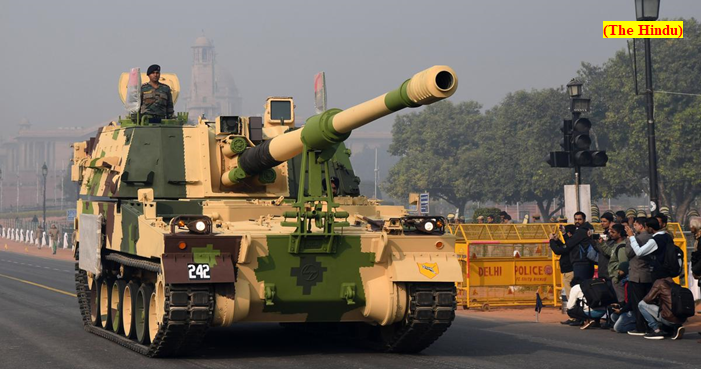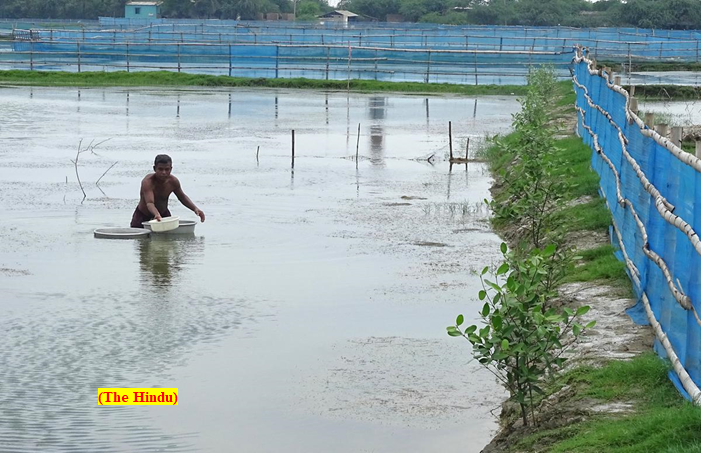Government starts process to buy 100 more K9-Vajras (GS Paper 3, Defence)

Why in news?
- The Defence Ministry has started the process for the procurement of 100 more K9-Vajra tracked self-propelled howitzers.
- They are built in India by Larsen & Toubro (L&T) using technology transferred from South Korean defence major Hanwha Defense Co. Ltd.
Background:
- At the height of tensions in eastern Ladakh in 2020, the Army deployed a regiment of these howitzers to augment its long-range fire power against the backdrop of a massive build-up of forces by China across the Line of Actual Control.
- The induction of Dhanush, K9-Vajra and M777 Ultra-Light Howitzers has enhanced the reach of artillery firepower on the northern borders.
- The 100th gun was delivered to the Army in February 2021, the contract for which was signed in May 2017. The contract involved maintenance transfer of technology to an Army base workshop to support the howitzers throughout their operational life cycle.
About K9-Vajra:
- The K9-Vajra is a 155-mm, 52-calibre tracked self-propelled howitzer based on the K9 Thunder built by Hanwha Defense.
- The K9-Vajra was mainly bought for use in deserts, but the stand-off prompted them to be deployed in the mountains as well.
Sustainable shrimp cultivation provides hope for mangrove restoration in Sundarbans
(GS Paper 3, Environment)
Why in news?
- A new initiative of sustainable shrimp cultivation provides hope for mangrove restoration in Sundarbans.
- For several years, environmentalists and experts have expressed concerns over unsustainable aquaculture, particularly shrimp collection, after cleaning large tracts of mangrove forests in Sunderbans.

SAIME:
- Under the initiative, Sustainable Aquaculture In Mangrove Ecosystem (SAIME), farmers have taken up cultivation of shrimp at 20 hectares at Chaital in West Bengal’s North 24 Parganas, and 10 hectares at Madhabpur in adjoining South 24 Parganas. However, they are doing their part in restoring the mangroves as well.
- A research program on the contribution of mangrove leaf litter in the nutritional dynamics in SAIME ponds has been initiated in collaboration with the Centre for Excellence in Blue Economy (CoE-BE) of the Indian Institute of Science Education and Research (IISER), Kolkata.
- The initiative started in 2019 has established a collaborative ecosystem integrating several key stakeholders from government departments, academia, and research institutes for co-creation and comprehensive advancement of this project.
- Shrimp cultivation is integrated into the mangrove ecosystem but when people extended the fisheries inwards, they excluded the mangroves.
Outcome:
- This pilot project has come out with a significant result in the last three years’ span, providing a per hectare average yield of fishes and shrimps amounting to 535 kg, out of which shrimp amounts average 275 kg (black tiger shrimp-200 kg and with freshwater giant prawn-75 kg).
- The rate of survival of planted mangrove saplings, which is usually 5-10%, has ranged between 30-50% in the initiative.
Shrimp cultivation:
- Fishing, particularly shrimp cultivation, is one of the key occupations of the people of Sundarbans, which is a complex network of rivers and low-lying islands that face a tide surge twice a day.
- Shrimp cultivation is practised in about 15,000 to 20,000 hectares of the unique ecosystem in India. The Sundarbans forest is about 10,000 sq. km across India and Bangladesh, of which 40% lies in India.
- There are 42 shrimp farmers engaged in the pilot project and a majority of them say that they have had higher incomes compared to previous years.
- They are also cultivating indigenous varieties of shrimps such as black tiger shrimp (P. monodon) and giant freshwater prawn (M. rosenbergii).



